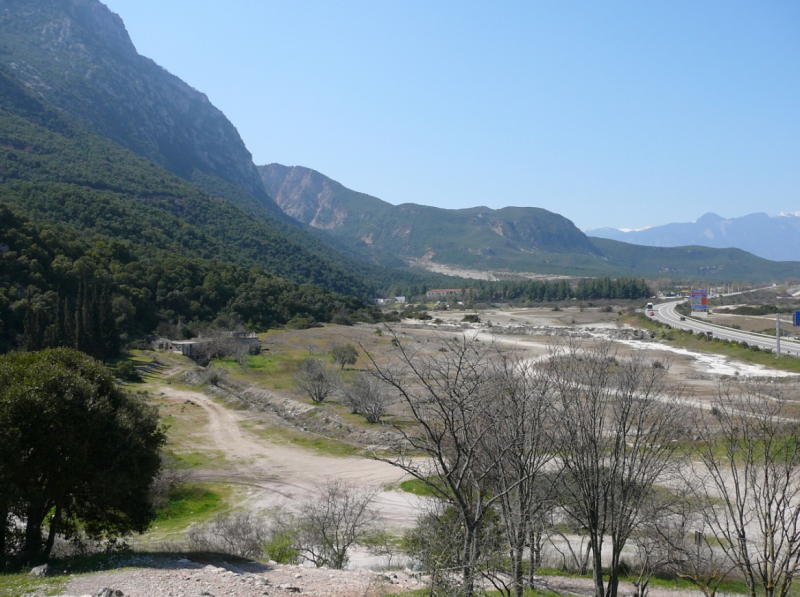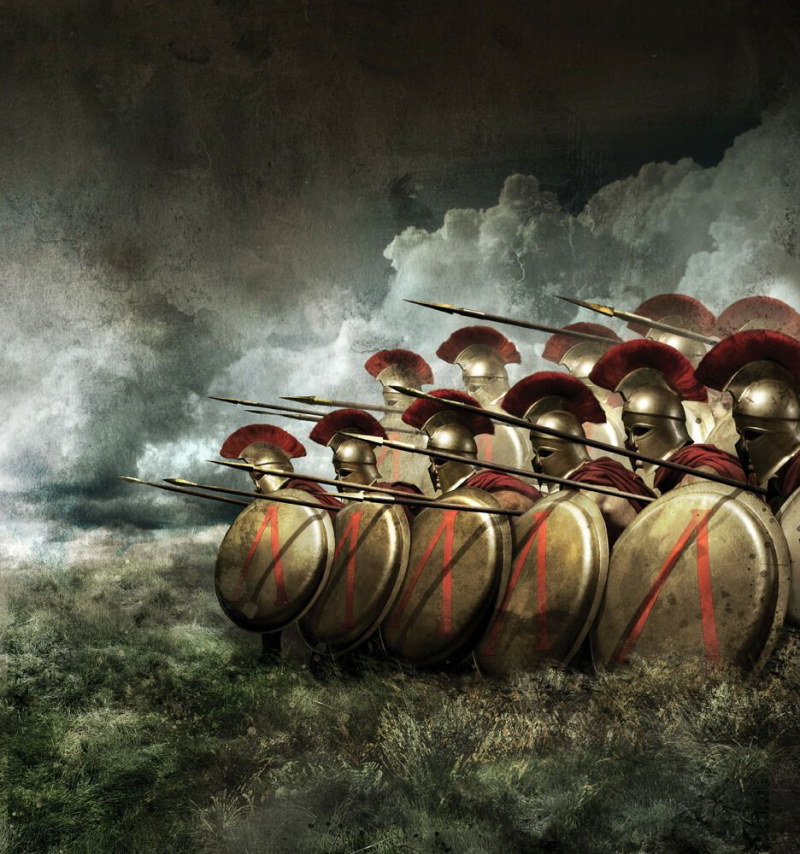Choosing Thermopylae as a battlefield was a great strategy
Thermopylae was a gateway region, a pass -three passes- on the main road connecting northern and central Greece. Thermopylae is a tapering plain that extends east to west for about 3 1/2 miles. To the south are mountains, while to the north lies the sea, known as the Gulf of Malis. Thermopylae is narrowest at its two ends, known as the East and West Gates, while the mountains are sharpest in the middle of the pass, known as the Middle Gate. The Greeks defended the pass from here, at the Middle Gate. They took their stand between the precipitous cliffs and the sea, using a crumbling ancient wall that they repaired. In 480 B.C., the land was just about twenty yards wide. The mountains were impenetrable, as far as the Greek defenders knew.
From a strategic standpoint, the Greeks were making the best use of their forces by defending Thermopylae. They had no need to pursue a decisive fight as long as they could prevent a further Persian march into Greece and could thus remain on the defensive. Furthermore, by defending two constrained passageways (Thermopylae and Artemisium), the Greeks' inferior numbers were reduced. The Persians, on the other hand, could not stay in one spot for long due to the difficulty of supplying such a massive force. As a result, the Persians were forced to retreat or advance, with the latter requiring forcing the pass of Thermopylae.
Tactically, the Thermopylae was suitable for the Greek method of battle. A hoplite phalanx could easily block the small pass, without fear of being outflanked by cavalry. Furthermore, the phalanx would have been extremely difficult to assault in the pass for the comparatively poorly armed Persian troops. The Greeks' main vulnerability was the mountain track that ran parallel to Thermopylae and could allow their position to be outflanked. Although unfavorable for cavalry, this route could readily be taken by Persian infantry (many of whom were versed in mountain warfare). Locals from Trachis informed Leonidas of this path, and he stationed a contingent of Phocian warriors there.
Therefore, choosing Thermopylae as a battlefield was a great strategy to defend against the Persian invasion. The Thermopylae pass was barely 200 yards wide at the time, thus the Persians had to come through it in tiny numbers, which could be resisted by the relatively small Greek force. Themistocles realized that the Persian navy could sail across the Straits of Artemisium and surround the Greek ground force. To block the strait, he stationed an allied Greek navy, of which he was captain.












